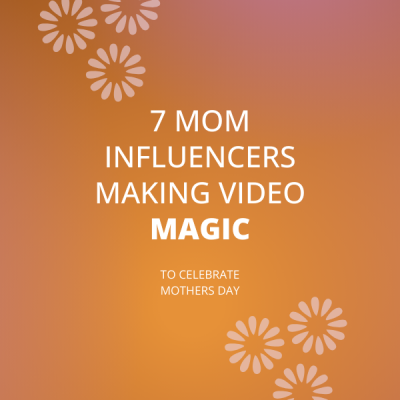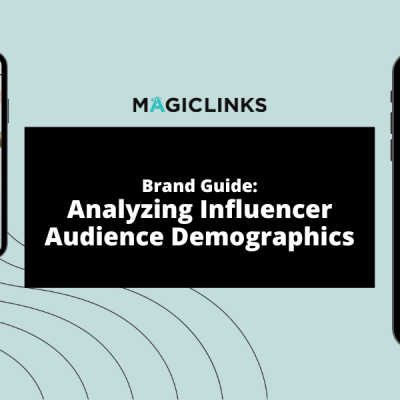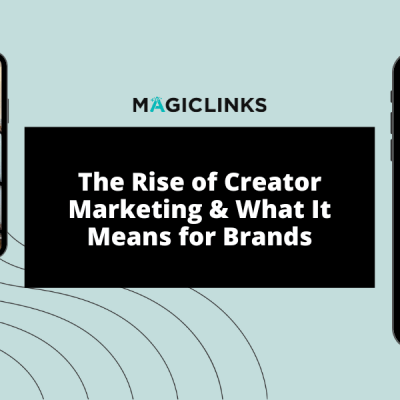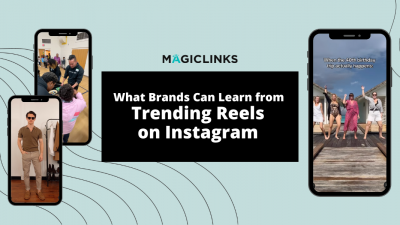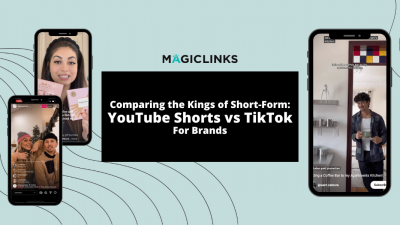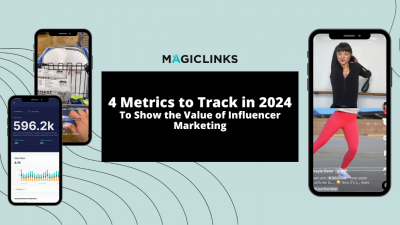Social commerce’s expected compound annual growth rate (CAGR) exceeds 30% from 2023 to 2030 (!) That’s…impressive.
The rise of social commerce as the next big retail phenomenon is undeniable. And here’s an eye-opener: of Instagram’s 1.6 billion users, 72% report making buying decisions based on the content they consume.
Let’s discuss what social commerce is, why you should use it, and the trends to look out for as you craft your social commerce strategy.
What is Social Commerce?
Many people understand the concept of e-commerce, which is defined as buying and selling using electronic means—aka, through the internet. E-commerce usually involves a website or app, a payment processor, and a product or service being bought or sold. For most people, this experience is simple and such an omnipresent part of life, it seems natural and unremarkable.
Social commerce takes this ease and simplicity to the next level. Are you wondering, “What is social commerce?” It is, essentially, using social media as a storefront to buy and sell products and services. Instead of sending potential customers to a website to complete the purchase, users can browse and buy items without ever actually leaving the social platform.
Why Should You Use Social Commerce Platforms?
Before you decide whether social commerce is for your brand, consider the following:
- TikTok is serious about social commerce: 33.3 million US consumers will buy directly on the platform.
- 130 million people each month view a shopping ad on Instagram
- More than half of Instagram users discover new products when using the app
- A full 25% of US consumers start their online shopping process with a search on YouTube. That’s a gigantic portion of shoppers!
- The overwhelming majority of social media users report that social media helps them decide what to buy
Millions of social media users are looking to buy products and services. Having a multi-pronged approach here is optimal and it makes sense if you think about it with a 30k foot lens: a user sees an influencer highlight your brand’s product which can be super validating and act as an effective fast-forward button on their consideration. Providing that user with the ability to seamlessly shop for and buy in-app or on platform, is simply a superior, lower-friction shopping experience.
Savvy brand leaders like Under Armour, Barkbox, Sephora, and Snug know this. They’re already taking advantage of this phenomenon.
Brands large and small engage in social commerce because it’s paying big dividends. The main benefits of social commerce include:
- Creating a seamless shopping experience
- Gaining access to a bigger slice of your target audience
- Getting immediate feedback from customers
- Leveraging social media to gather data and segment audiences
As you consider the possibilities that social commerce platforms hold for your brand, pay attention to the emerging trends in this space. Social media is constantly changing, which means that social media marketing tactics need to constantly evolve too.

7 Social Commerce Trends to Look Out For
Social commerce is driving clicks and sales for many brands. However, like any trend, it’s essential to stay on the cutting edge to quickly deliver what your customers want in the way they expect.
It’s important to realize that social media trends in 2023 are all about enhancing the customer experience. As you launch your social commerce campaigns, here are seven trends you need to pay attention to so you can craft a memorable buying experience for your audience.
1. Video Content
While it seems hard to avoid in 2023, more than 90% of internet users still say they want more video content from the brands they love most. Videos allow you to showcase your products and services in greater detail, demonstrating to customers exactly how your offer can solve their problems or bring them joy.
It’s easier than ever to add clickable links and calls to action in Instagram reels, TikTok videos, and YouTube videos. Additionally, you could consider using the live stream feature on these platforms to provide product demonstrations or personalized consultations.
2. Personal Messaging
These days, customers expect personalization at every stage of their buying journey. As more users get on board the social media train, it would make sense that people now expect brands to be accessible via their favorite platforms.
As social shopping continues its path of innovation, personal messaging will become an integral part of the customer experience. Your customers can contact you directly for pre-purchase questions, troubleshooting, and order issue resolutions. Providing them with their desired personal experience will keep them returning for more.
3. AI
If you’re annoyed with posts touting “Must-see ChatGPT prompt ideas” in your feeds, we feel you. In contrast to how in-your-face those posts can feel, social commerce’s allure with the promise of artificial intelligence (AI) can come in less consumer-facing ways. Content recommendations are increasingly relying on AI and layering in shoppable ads to AI-fueled content recs is a stated long-term priority for social commerce giant Meta.
Many in the industry think AI could swallow the customer experience whole, eventually. It’s still super early but the AI creep into social shopping is well underway in areas like generative AI, which is being deployed in many ways people interact with brands like customer service and chatbots/smart virtual shopping assistants.
4. Augmented Reality
Augmented reality may sound like futuristic technology, but if you are active on social media, you’ve likely already used it. Have you ever put a filter on one of your pictures or videos? If so, you’ve used VR.
In the future, social shopping will likely take advantage of this trend by bringing customers into a brand’s unique universe and allowing them to try on or play with clothing and products without having to walk into a store. This helps the customer form an emotional attachment through a personalized experience and increases satisfaction because they know what to expect with what they buy.
5. User-Generated Content
User-generated content has always provided brands with social proof that their products and services are high-quality and worthy of customers’ hard-earned dollars. Many social media users’ buying decisions are impacted by user-generated content simply because another authentic person showed that what you offer genuinely works.
Not only can you make user-generated content shoppable on social media, but you can also tag the user in your photos, stirring followers’ excitement about posting in hopes that you’ll take notice and re-post their content. This also allows you to encourage followers to use your branded hashtags to make it more likely that you’ll discover and use their photos and videos.
6. Micro-Influencers
Social media recently “officially” entered the age of the micro-influencer. Unlike TikTok megastars, these influencers usually have smaller audiences of about 10–50k followers or up to 100k, depending on the topic/product/service. Don’t let the (relatively speaking) smaller follower count make you count them out. Micro-influencers often have higher engagement rates on their posts, as their relatable image and high level of interaction resonates well with their audience.
Striking a deal with a micro-influencer to post about your brand and point users to your social store is always a good idea. In addition, consider conducting live streams with micro-influencers to allow potential customers to get to know them and see them trying out your products or services.
7. Live Shopping
If you remember your mom’s Tupperware parties of yesteryear, live shopping provides a similar experience in the virtual realm. This feature lets brands showcase your products and services in real-time, allowing users to see how it works and what it can do for them. Live shopping also enables you to answer questions on the spot and help users make buying decisions in real time.
Because it’s done directly on the social media platform, live shopping has another benefit: it helps you gather additional data to segment your audience. When you do this, you can create different experiences for each group, ensuring everyone is offered products and services that appeal to their needs and desires.

Tips for Venturing into Social Commerce
Social media shopping is definitely the wave of the future. To extract maximum benefit out of your social commerce strategy, consider the following tips:
- Use micro-influencers for a more personal experience
- Leverage user-generated content for exposure
- Engage with your audience during live content
- Maximize each platform’s latest features, such as brand tags and Tiktok Shop
- Explore new creative concepts to see what resonates with your audience
When you commit to social commerce best practices, you’ll be able to more effectively reach your audience and achieve your intended result.
Create the Best Possible Experience for Your Customers
What is social commerce designed to accomplish? Ultimately, it ensures your customers have everything they need to make the right buying decisions. And it reduces any friction in the purchasing process because they can buy directly within a familiar ecosystem.
When used as part of a comprehensive strategy to reach customers in every corner of the web, social commerce trends can take your business to new heights and help even more customers discover how your products and services can improve their lives.



